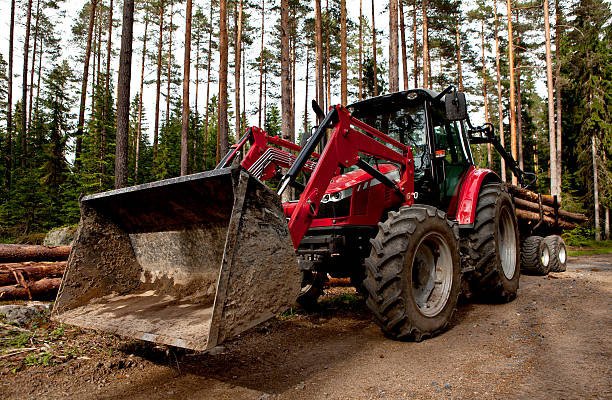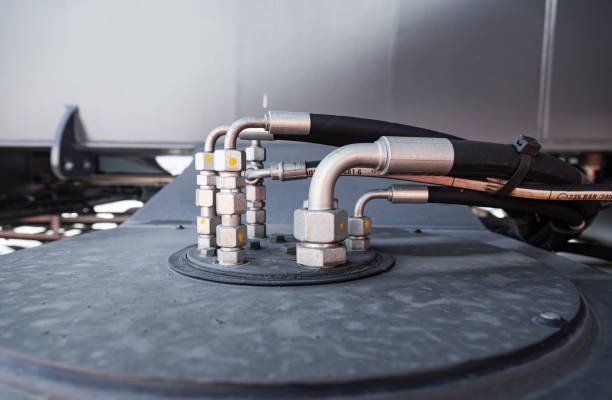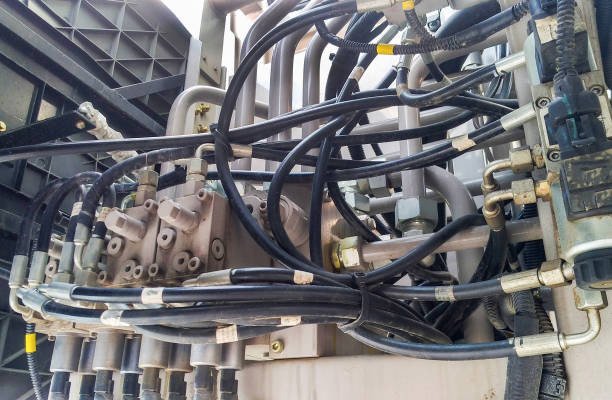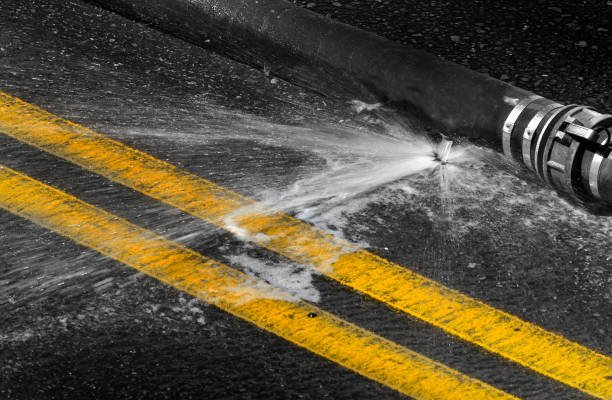Introduction
Choosing the best hydraulic couplings for agriculture is essential for keeping your farm equipment running safely and efficiently. Whether you’re working with tractors, loaders, or sprayers, the right couplings ensure smooth hydraulic flow, quick connections, and long-lasting performance in tough farming conditions.
In this comprehensive guide, we’ll explore the best types of hydraulic couplings used in farming, explain how to choose the right one based on your needs, and review some of the top coupling options for various agricultural applications.
Understanding Hydraulic Couplings in Agricultural Machinery
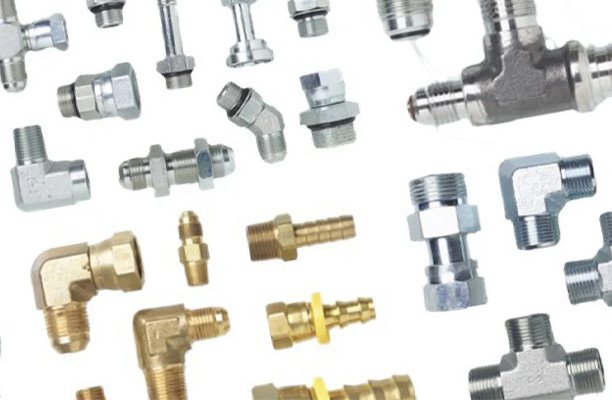
Hydraulic quick couplings, also known as quick disconnects (QDs), are devices used to quickly connect or disconnect hydraulic lines without tools. In agriculture, they’re primarily used to link implements like plows, sprayers, and loaders to a tractor’s hydraulic system.
These couplings allow hydraulic fluid to flow under high pressure between components while maintaining a leak-free seal. Disconnection often happens under pressure, so couplings in this field must be rugged, easy to use, and capable of operating in dirty or corrosive environments.
In farming applications, common hydraulic functions include:
- Raising/lowering implements
- Operating cylinders for loaders or harvesters
- Driving PTO-powered hydraulic motors
- Switching between attachments on front-end loaders or skid steers
Key Criteria for Choosing Agricultural Hydraulic Couplings
Selecting the right hydraulic coupling is not just about thread size or fitting type. Farmers and agricultural technicians must consider a range of factors to ensure optimal performance and safety:
1. Operating Pressure and Flow Rate
- Match the coupling’s rated pressure with the hydraulic system’s working pressure.
- Exceeding pressure ratings can lead to failures, leaks, or equipment damage.
- Consider GPM (gallons per minute) flow compatibility, especially for high-demand attachments like balers or sprayers.
2. Connection Environment
- Farms are dusty, muddy, and wet. Couplings exposed to the elements should resist corrosion and clogging.
- Flat-face couplers are often preferred for their easy-to-clean surface and minimal fluid loss on disconnection.
3. Frequency of Connection/Disconnection
- If you frequently swap implements, use push-to-connect or flat-face couplings to save time and avoid mess.
- For occasional use, screw-type couplers offer greater sealing strength and can connect under pressure.
4. Safety Features
- Breakaway couplings prevent hose or implement damage if an attachment is not properly disconnected.
- Locking sleeves or ball-bearing designs offer added protection against accidental disconnection.
Most Common Types of Hydraulic Couplings in Agriculture
Let’s explore the four most widely used coupling types in farming, highlighting their pros, cons, and use cases:
1. ISO 5675 Agricultural Couplings (Poppet-Style)
Overview: These are the traditional couplers found on older tractors and many implements. Designed for agricultural use, ISO 5675 couplings use a poppet valve system to control flow.
Features:
- Push-pull or sleeve-type operation
- Compatible with standard agricultural attachments
- Easy to find and replace
- Available in male/female pairs
Pros:
- Cost-effective and readily available
- Standardized for interoperability
- Good for most low- to medium-pressure applications
Cons:
- Can leak small amounts of fluid when disconnected
- Susceptible to dirt and debris if not capped
Best Use Cases:
- Loader arms, plows, seed drills, fertilizer spreaders
2. Flat Face Couplings (ISO 16028)
Flat face couplings are increasingly common in modern agricultural equipment due to their superior sealing properties and resistance to contamination. These couplings have a flush surface that makes them easy to wipe clean before connection, which helps maintain hydraulic system cleanliness and extend component life.
Features:
- Non-spill design prevents fluid loss and air inclusion
- Push-to-connect and disconnect without tools
- Designed for minimal environmental impact
Pros:
- Excellent dirt and contamination resistance
- Leak-free disconnection makes them cleaner to use
- Ideal for high-use applications
Cons:
- Typically more expensive than traditional ISO 5675
- May not be compatible with older equipment without adapters
Best Use Cases:
- Front loader attachments, skid steer implements, utility tractors in dusty or wet environments
3. Screw-to-Connect Couplings
Screw-type hydraulic couplings offer the most secure connection, making them ideal for high-pressure systems or connections made under pressure. Instead of a push or sleeve mechanism, they screw together to lock the male and female halves tightly, which helps prevent accidental disconnection.
Features:
- High-pressure tolerance
- Connects and disconnects under residual system pressure
- Mechanically locked design for added security
Pros:
- Extremely secure under load and vibration
- Suitable for use in mobile and stationary equipment
- Ideal for heavy-duty and high-pressure attachments
Cons:
- Takes more time to connect/disconnect
- Threads can get damaged if not maintained or cleaned regularly
Best Use Cases:
- Hydraulic augers, backhoes, post drivers, implements with large hydraulic cylinders
4. Breakaway Couplings and Safety Systems
Breakaway couplings are designed to automatically disconnect under extreme tension or accidental force—such as driving away with an attached implement still connected. These safety devices protect both the hydraulic lines and the equipment from serious damage.
Features:
- Built-in release mechanism
- Often spring-loaded or shear-pin based
- Compatible with ISO 5675 and other standard coupling types
Pros:
- Prevents costly hose or connector damage
- Enhances operator safety
- Can reduce fluid loss during accidental disconnect
Cons:
- May require reset or replacement after breakaway event
- Slightly higher cost than standard couplings
Best Use Cases:
- Rear-mounted implements, high-risk disconnect points on planters or sprayers
Coupling Material Types and Durability

The materials used in hydraulic couplings significantly affect their longevity, performance, and resistance to environmental factors. Farmers must weigh cost against durability when choosing between common material types.
Common Materials:
1. Steel (Zinc-Plated or Chrome-Plated)
- Most common in agricultural use
- Strong and durable
- Plating provides moderate corrosion resistance
2. Stainless Steel
- Excellent corrosion resistance, especially in fertilizer or livestock environments
- More expensive but long-lasting
- Often used in specialized applications or marine/agriculture overlap
3. Brass or Composite
- Less common in high-pressure farming uses
- Suitable for lower-pressure systems or where fluid compatibility is a concern
- Composite couplers are lightweight and sometimes used in mobile or niche agricultural tools
When selecting materials, also consider seal types (like Nitrile or Viton O-rings), which affect resistance to hydraulic fluid types and temperature extremes. Always check material compatibility with the fluids and environmental conditions specific to your operation.
Maintenance Best Practices for Agricultural Couplings
Maintaining hydraulic couplings is essential for prolonging the life of your equipment and preventing downtime. Dirt, grit, and moisture can wear seals or interfere with proper connection, causing performance issues or even total system failure.
1. Regular Cleaning
- Wipe couplings before and after each use
- Use compressed air to remove internal debris
- Store implements with caps on both male and female ends
2. Inspection
- Look for worn O-rings, damaged locking balls, bent sleeves, or signs of hydraulic oil residue
- Replace parts immediately if cracking, galling, or deformation is visible
3. Lubrication and Protection
- Use manufacturer-recommended lubricants to prevent rust and ease connection
- Use dust caps or covers to prevent dirt ingress when couplings are not connected
4. Pressure Management
- Always relieve pressure before attempting to disconnect
- Use couplings rated for connection under pressure in systems that retain residual pressure
Neglecting coupling maintenance can lead to system inefficiencies, leakages, or costly hydraulic pump wear due to contamination.
Compatibility, Standards, and Adapter Use
Agricultural equipment is manufactured globally, so ensuring compatibility between tractors, attachments, and aftermarket components can be challenging. Fortunately, international standards help guide compatibility and prevent mismatch issues.
ISO Standards to Know:
- ISO 5675 – Traditional agricultural couplers
- ISO 7241-A – General industrial couplers sometimes used in ag
- ISO 16028 – Flat-face couplers
- ISO 15171-1 – Breakaway coupling standard
Tips for Managing Compatibility:
- Check thread size and type (e.g., BSPP, NPT, ORFS)
- Use matching male/female pairs or quick coupler kits from reputable manufacturers
- If using older or imported equipment, identify the standard and use appropriate adapters to avoid forcing connections
Adapters can solve many compatibility issues, but they should be considered temporary. For long-term reliability, upgrading all couplers to a single standard (e.g., ISO 16028) across equipment is ideal.
Maintenance Best Practices for Agricultural Couplings
Maintaining hydraulic couplings is essential for prolonging the life of your equipment and preventing downtime. Dirt, grit, and moisture can wear seals or interfere with proper connection, causing performance issues or even total system failure.
1. Regular Cleaning
- Wipe couplings before and after each use
- Use compressed air to remove internal debris
- Store implements with caps on both male and female ends
2. Inspection
- Look for worn O-rings, damaged locking balls, bent sleeves, or signs of hydraulic oil residue
- Replace parts immediately if cracking, galling, or deformation is visible
3. Lubrication and Protection
- Use manufacturer-recommended lubricants to prevent rust and ease connection
- Use dust caps or covers to prevent dirt ingress when couplings are not connected
4. Pressure Management
- Always relieve pressure before attempting to disconnect
- Use couplings rated for connection under pressure in systems that retain residual pressure
Neglecting coupling maintenance can lead to system inefficiencies, leakages, or costly hydraulic pump wear due to contamination.
Compatibility, Standards, and Adapter Use
Agricultural equipment is manufactured globally, so ensuring compatibility between tractors, attachments, and aftermarket components can be challenging. Fortunately, international standards help guide compatibility and prevent mismatch issues.
ISO Standards to Know:
- ISO 5675 – Traditional agricultural couplers
- ISO 7241-A – General industrial couplers sometimes used in ag
- ISO 16028 – Flat-face couplers
- ISO 15171-1 – Breakaway coupling standard
Tips for Managing Compatibility:
- Check thread size and type (e.g., BSPP, NPT, ORFS)
- Use matching male/female pairs or quick coupler kits from reputable manufacturers
- If using older or imported equipment, identify the standard and use appropriate adapters to avoid forcing connections
Adapters can solve many compatibility issues, but they should be considered temporary. For long-term reliability, upgrading all couplers to a single standard (e.g., ISO 16028) across equipment is ideal.
Brand Recommendations and Product Examples
When selecting hydraulic couplings for agricultural machinery, it’s critical to choose reliable brands known for durability, performance, and availability of replacement parts. Below are some of the most trusted manufacturers in the agricultural industry:
1. Parker Hannifin
One of the global leaders in hydraulic systems, Parker offers a full range of ISO-compliant couplings including ISO 5675 and ISO 16028. Known for high performance and excellent sealing capabilities, their couplings are popular on OEM farm equipment.
Top Agricultural Products:
- 6600 Series ISO 5675 couplings
- FEM Series Flat Face ISO 16028 couplers
2. Stucchi
Italian-made and known for precision engineering, Stucchi specializes in flat face and high-pressure couplers. Their APM and FIRG series are designed for frequent connection and disconnection under pressure—perfect for loader attachments.
3. Faster Couplings
A widely respected brand in Europe and North America, Faster’s couplings are frequently found on John Deere and Case IH equipment. Their FFH (Flat Face High Flow) and NV series are favored for agricultural loaders and hydraulic power packs.
4. Eaton / Aeroquip
Eaton’s hydraulic division produces a wide range of industrial and agricultural coupling products with a focus on safety and global compatibility. Their ball-lock ISO couplings and flat face designs are rugged and corrosion-resistant.
5. TASKE Fitting
A trusted supplier in Asia and increasingly present in global agricultural markets, TASKE Fitting provides robust, OEM-compatible hydraulic couplings with competitive pricing.
Product Highlights:
Zinc-plated, corrosion-resistant models ideal for field use
Offers a wide selection of ISO 5675 and ISO 7241-A poppet-style couplers
Customizable fittings and port options for global tractor brands
Comparison Table of Hydraulic Coupling Types for Agriculture
| Coupling Type | ISO Standard | Best Use Case | Connect Under Pressure | Leak-Free Disconnect | Contamination Resistance | Cost |
|---|---|---|---|---|---|---|
| ISO 5675 (Poppet) | ISO 5675 | General farm implements | No | Low | Moderate | Low |
| Flat Face | ISO 16028 | Loaders, skid steers, dirty areas | Yes | Yes | High | Med |
| Screw-to-Connect | Varies | High-pressure tools, PTO systems | Yes | Yes | High | Med–High |
| Breakaway Coupling | ISO 15171-1 | Safety-critical tractor connections | No | Depends | Moderate | Med |
This chart summarizes the core strengths of each coupling type and can help farmers quickly identify which product suits their specific operation or equipment.
Conclusion
Choosing the right hydraulic coupling in agriculture is about more than just size or pressure ratings. It’s about ensuring uptime, safety, and efficiency in the field.
FAQs
1. What is a hydraulic coupling used for on a farm?
A hydraulic coupling connects hoses between your tractor and farm tools so oil can flow and power the equipment. It lets you hook up and unhook attachments quickly.
2. What type of hydraulic coupling is most common on tractors?
Most tractors use ISO 5675 poppet-style couplings. These are the round connectors you see on the back of the tractor and are used for many farm implements.
3. Why should I use flat face couplings?
Flat face couplings don’t leak oil when you disconnect them and are easier to clean. They’re great for dirty or dusty environments, like fields and barns.
4. How do I know what size coupling I need?
Check your tractor’s manual or look for markings on your current coupler. You can also measure the diameter and thread type or take it to a farm supply store for help.
5. Can I connect couplers while there’s pressure in the system?
Not always. If there’s pressure, it can be hard or unsafe to connect. Some couplings are made to connect under pressure—look for that feature if you often leave pressure in your lines.
6. How do I take care of my couplings?
Wipe them clean before use, keep dust caps on when not in use, and check for leaks or cracks. Replacing worn couplers can prevent damage to your equipment.

